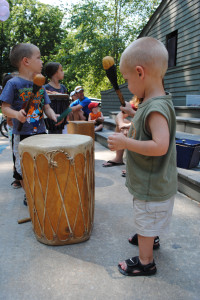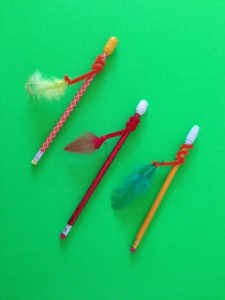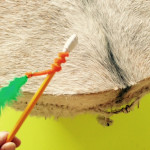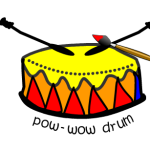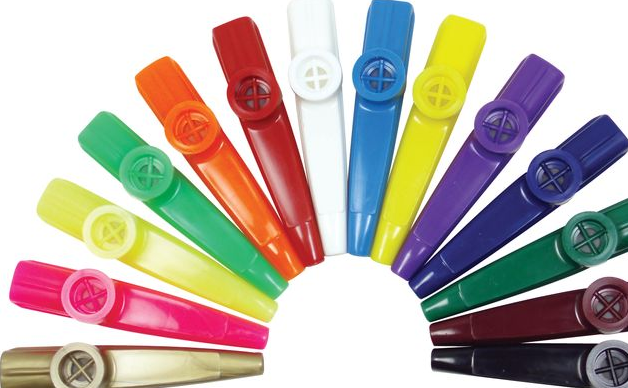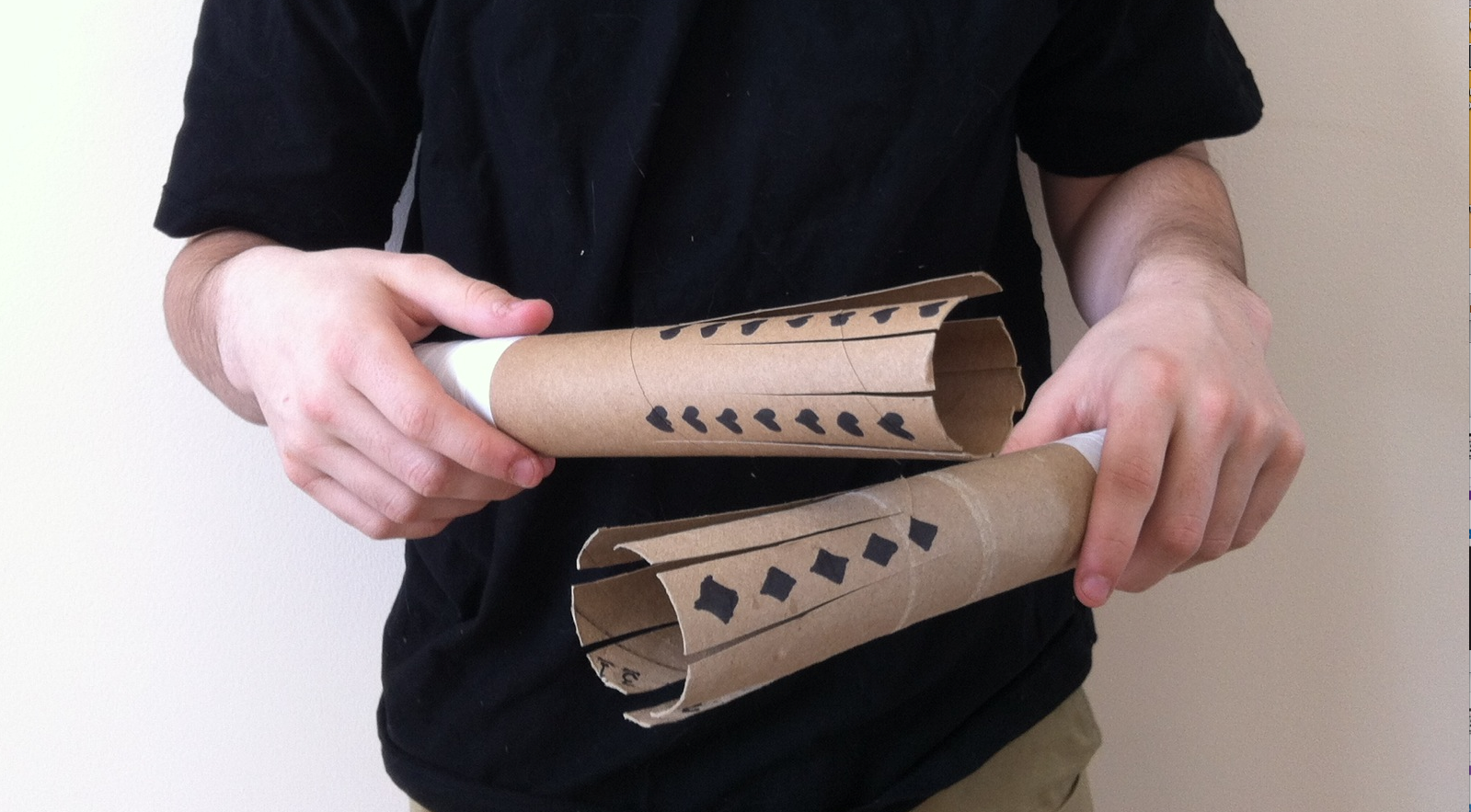 Rhythm sticks are great additions to almost any type of musical play with children. Found all around the world, most rhythm sticks are about 6 to 8” long and made of solid wood. Hawaiian rhythm sticks, however, take a really unique
Rhythm sticks are great additions to almost any type of musical play with children. Found all around the world, most rhythm sticks are about 6 to 8” long and made of solid wood. Hawaiian rhythm sticks, however, take a really unique 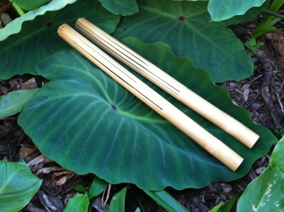 approach to this age-old instrument. Called pu’ili; they are made from longer sticks of bamboo, solid on one end and slit on the other to make a rattling noise when struck together. And they are tapped in many different ways, often as part of the hula tradition so making and playing your own pu’ili sticks can be a fun way to enjoy movement and music at the same time.
approach to this age-old instrument. Called pu’ili; they are made from longer sticks of bamboo, solid on one end and slit on the other to make a rattling noise when struck together. And they are tapped in many different ways, often as part of the hula tradition so making and playing your own pu’ili sticks can be a fun way to enjoy movement and music at the same time.
Want to see how they are played as part of the Hawaiian tradition? Watch this short video and you will be amazed at the coordination of the dancers and the many different ways two sticks can be used to create rhythm and become part of the graceful moves in this dance.
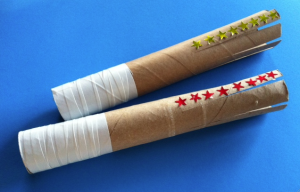 Crafty Pu’ili Sticks
Crafty Pu’ili Sticks
Actual pu’ili sticks are made from lengths of bamboo, generally around 12 – 18” long. They are left solid at one end and then cut into numerous slats on the other end. Our craft version uses the cardboard roll from paper towels and adds a few elements for decoration and durability. Supplies you need are:
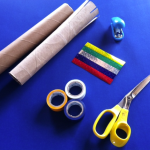 2 cardboard tubes from paper towels
2 cardboard tubes from paper towels
Scissors
(Optional) Electrical or duct tape
Stickers, markers or other materials for decoration
This is such an easy craft. Simply cut slits in one side of the cardboard rolls and use the electrical tape or duct tape to wrap the other (uncut) end. This will indicate which side to hold and help the sticks last longer.
Although it’s not traditional, you can decorate the cut side, using markers or stickers, paint, glitter and glue or whatever inspires your imagination. Once you’re done – it’s time to play!
One quick note here, since they are made of cardboard, these pu’ili sticks may not last a long time. If you enjoy this musical craft, it may be a good idea to save these paper towel rolls and make several pairs.
Playing Your Pu’ili
There are lots of basic moves for playing these rhythm sticks that any child or adult can master right away. Try some of these easy suggestions:
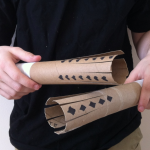 Hold one stick in your right hand in front of you. Tap with the left stick.
Hold one stick in your right hand in front of you. Tap with the left stick.
Hold one stick in your left hand in front of you. Tap with the right stick.
Hold one stick in your right hand by your right shoulder. Tap with the left stick.
Hold one stick in your left hand by your left shoulder. Tap with the right stick.
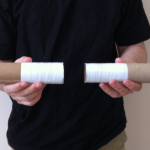 Tap the two wrapped ends together in front of you.
Tap the two wrapped ends together in front of you.
(If seated at a desk or table) Tap the two wrapped ends on the desk or table in front of you.
(If seated on the ground) Tap the two wrapped ends on the ground in front of you.
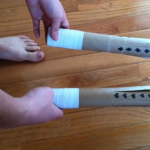 If standing, tap both sticks on the ground by your right toe.
If standing, tap both sticks on the ground by your right toe.
If standing, tap both sticks on the ground by your left toe.
Mix and match these moves.
Mix and match these moves in time with Hawaiian music.
Mix and match these moves in time with any of your favorite types of music.
Rhythm Games
Once you’ve mastered the basic moves, you can also play with an adult, partner, friend or even a group. In the video above, you probably noticed how the dancers tapped each other’s sticks. You can try something similar. If you sit across from a partner, pick out what moves you want to do (such as – let’s tap right, then left sticks in the middle) and give them a try. Make up your own patterns with or without music.
If you’re seated in a circle with a group, you can try patterns such as this one:
Everyone taps both wrapped ends on the ground twice, then taps both sticks together in front of themselves.
Everyone taps both wrapped ends on the ground twice, then reaches out to tap the sticks of their neighbors, both right and left.
Repeat the pattern while keeping a beat. Try it without music, while singing or while playing recorded music.
—————–
Photograph of pu’ili sticks on a tropical leaf, used by permission from NaKani O Hula Farms. Their farm grows and creates many traditional Hawaiian instruments and crafts. Find them at:
http://www.nakaniohula.com/about-us/
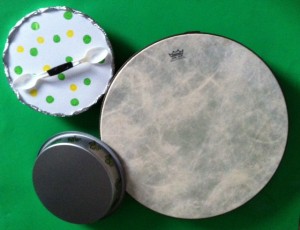 St. Patrick’s Day is on the way!
St. Patrick’s Day is on the way!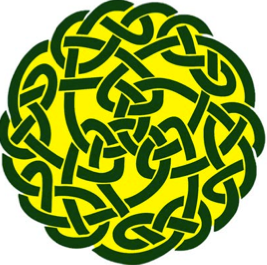 good luck. The Celtic Cross often represents religion and spirituality. A harp is often pictured because it is the national instrument of Ireland and the Claddagh (two hands joined by a crowned heart) is a beautiful symbol that represents the bonds of friendship, love and loyalty.
good luck. The Celtic Cross often represents religion and spirituality. A harp is often pictured because it is the national instrument of Ireland and the Claddagh (two hands joined by a crowned heart) is a beautiful symbol that represents the bonds of friendship, love and loyalty.
